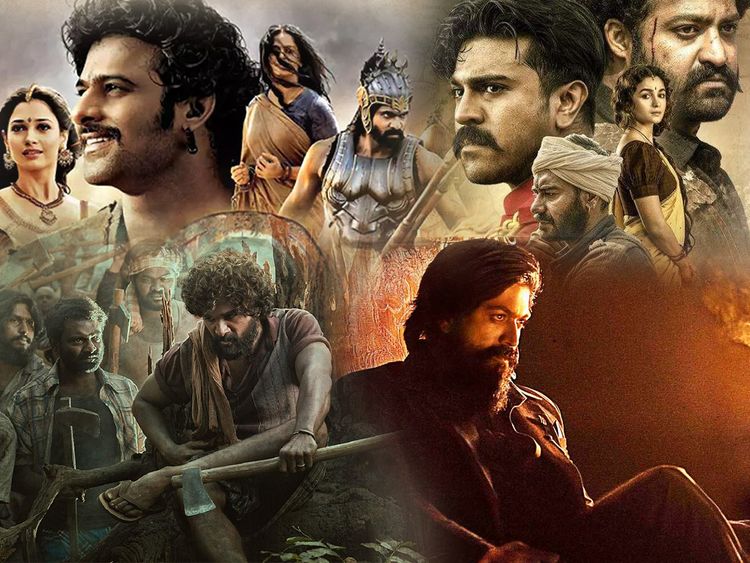
While both South Indian movies and Bollywood movies have a significant following and are influential in their own right, it is important to note that “popularity” can be subjective and can vary depending on different factors such as regional preferences, cultural influence, and marketing strategies. That being said, here are a few reasons why South Indian movies have gained significant popularity: SSRmovies published many south indian movies weekly users can easily enjoy without any spending any cost.
In the realm of Indian cinema, Bollywood has long been hailed as the epitome of glitz, glamour, and grandeur. However, in recent years, there has been a noticeable shift in the popularity and recognition of South Indian movies. Films from the southern regions of India, particularly Tamil, Telugu, Malayalam, and Kannada cinema, have emerged as a powerful force in the Indian film industry. This article explores the reasons behind the growing popularity of South Indian movies, highlighting their unique characteristics, storytelling prowess, regional cultural influence, and diverse talent pool.
Rich Storytelling Traditions:
One of the key factors contributing to the popularity of South Indian movies is their rich storytelling traditions. South Indian cinema has a long history of producing thought-provoking narratives that often delve into social issues, human emotions, and cultural nuances. These movies captivate audiences with their compelling storylines, well-developed characters, and engaging dialogues. The focus on narrative depth and authenticity sets South Indian films apart from their Bollywood counterparts, which sometimes prioritize commercial elements over storytelling.
Regional Cultural Influence:
South India boasts a distinct cultural heritage that is beautifully portrayed in its movies. Each state in the southern region has its own unique customs, traditions, and artistic styles, which find expression in the films. From vibrant festivals to folk dances and local cuisines, South Indian movies provide a glimpse into the rich tapestry of regional cultures. This connection to their roots resonates with audiences, both within and outside the region, fostering a sense of pride and affinity for South Indian cinema.
Technological Advancements:
South Indian movies have made significant strides in terms of technical excellence. The use of advanced visual effects, high-quality cinematography, and innovative storytelling techniques has elevated the overall production value of these films. The infusion of cutting-edge technology in South Indian cinema has attracted viewers who appreciate the industry’s commitment to delivering visually stunning and immersive experiences. The integration of technology has not only enhanced the viewing pleasure but has also garnered international recognition for South Indian films.
Music and Dance:
Another compelling aspect of South Indian movies is their captivating music and dance sequences. Music plays a pivotal role in these films, with soulful melodies and foot-tapping beats that leave a lasting impact on the audience. South Indian cinema is also renowned for its vibrant dance performances, showcasing a range of classical and folk dance forms. The combination of melodious tunes, graceful choreography, and visually appealing sets creates a sensory delight that transcends language barriers, attracting a diverse fan base.
Embracing Experimental Cinema:
South Indian filmmakers have displayed a willingness to explore unconventional themes and experiment with storytelling techniques. This adventurous spirit has resulted in the emergence of groundbreaking films that push the boundaries of traditional filmmaking. Directors and actors from the South Indian film industry have gained recognition for their bold choices, tackling subjects that are often considered taboo or challenging. This willingness to take risks and embrace innovation has earned South Indian movies acclaim from both critics and audiences.
Diverse Talent Pool:
South Indian cinema boasts a vast and diverse talent pool, comprising exceptionally skilled actors, directors, technicians, and writers. The industry has nurtured many gifted individuals who have left an indelible mark on Indian cinema. The remarkable performances of actors like Rajinikanth, Kamal Haasan, Prabhas, and Vijay have garnered them a massive fan following across the country. Additionally, visionary directors like Mani Ratnam and S.S. Rajamouli have pushed the boundaries of filmmaking, further solidifying the reputation of South Indian movies.
Conclusion:
It is worth noting that Bollywood, the Hindi film industry based in Mumbai, continues to be a dominant force in the Indian film industry and enjoys immense popularity both within and outside India. Bollywood movies have a wide reach and often have larger budgets, star power, and promotional campaigns, which also contribute to their popularity. Ultimately, the popularity of South Indian movies versus Bollywood movies can vary based on regional preferences, cultural factors, and individual tastes.
